Jan-Luca Thomas
Year of birth: 1997
Where do you live: Siegen, Germany
Your education: self-taught
Describe your art in three words: feeling. atmosphere. mood.
Your discipline: impressionism
Instagram
Your painting journey started only in 2023. What inspired you to pick up the palette knife and devote yourself to painting at that moment?
The last time I had anything to do with art was at school. However, the lessons were so dry that creativity hardly played a role – as a result, I quickly lost interest.
2023 was an eventful year for me: a lot of work, two moves. I wanted to set up my office in my new apartment, and an empty wall opposite my desk appealed to me. At the same time, I came across some inspiring works on social media, and the idea of painting myself wouldn’t leave me. Originally, I wanted to try something along the lines of Jackson Pollock – because there’s supposedly less room for “mistakes”. But in the end, I fell in love with another work, picked up a brush – and was immediately captivated.
The creative process was a revelation for me. I had been looking for a long time for an outlet alongside my full-time job to clear my head. Painting allowed me to switch off in a way I had never experienced before. Hours flew by, and I was completely at one with myself. At first, I painted on the floor with canvases and spatulas from the hardware store. Today, I’ve upgraded my equipment and even have a small studio in the basement. What started as a spontaneous hobby has become a lasting passion.
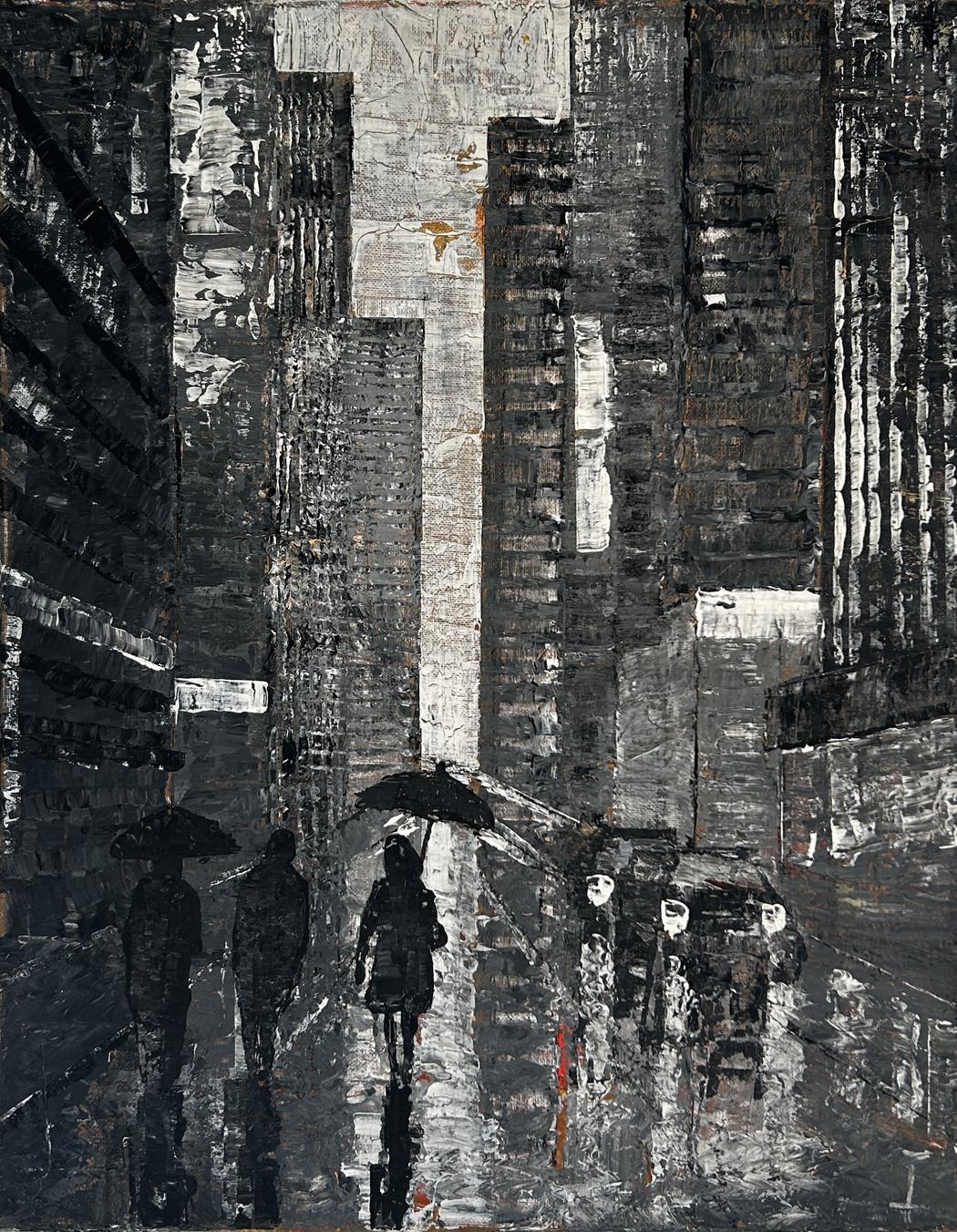 Jan-Luca Thomas | Bronx Depression | 2025
Jan-Luca Thomas | Bronx Depression | 2025
Many of your works convey a sense of stillness and suspended time. How do you decide which fleeting moments to capture on canvas?
There are certain moments when I feel as if time is slowing down or even standing still. This can happen in a busy city center, during a hike, or in the middle of a large event. It’s almost like a movie effect: for a moment, I feel as if I’m watching from the outside. It is precisely this relaxation and beauty of the moment that I want to capture in my pictures.
For me, it’s not about perfect, realistic reproduction, but about the mood, the atmosphere of that moment. When I look at my finished works and am transported back to that feeling, I know I’ve captured the right moment.
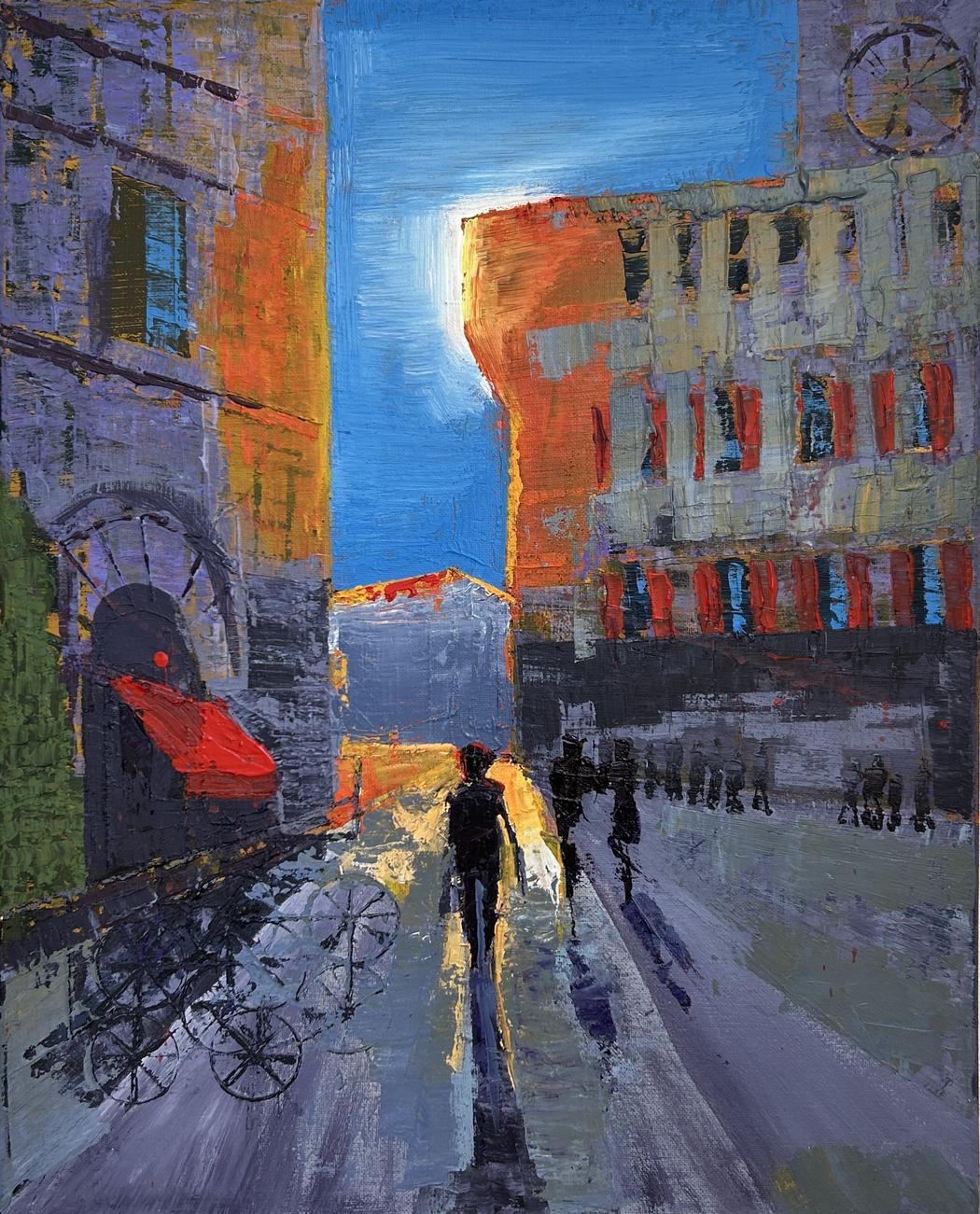 Jan-Luca Thomas | Florence Heat | 2025
Jan-Luca Thomas | Florence Heat | 2025
You work with both monochromatic and vivid color schemes. What influences your choice of palette for each painting?
That depends on many factors – the season, my mood, or the theme of the work.
Bright, colorful images usually appear more accessible and euphoric. However, darker tones are not an expression of melancholy for me. Even my gray- or black-dominated works convey a sense of security and tranquility to me. For example, even when the sky outside is gray and it’s raining, I can feel warm and comfortable under an umbrella.
I find it particularly exciting when viewers describe their own impressions to me – even if they differ from my intention. For me, that’s what art is all about: triggering emotions in very different ways.
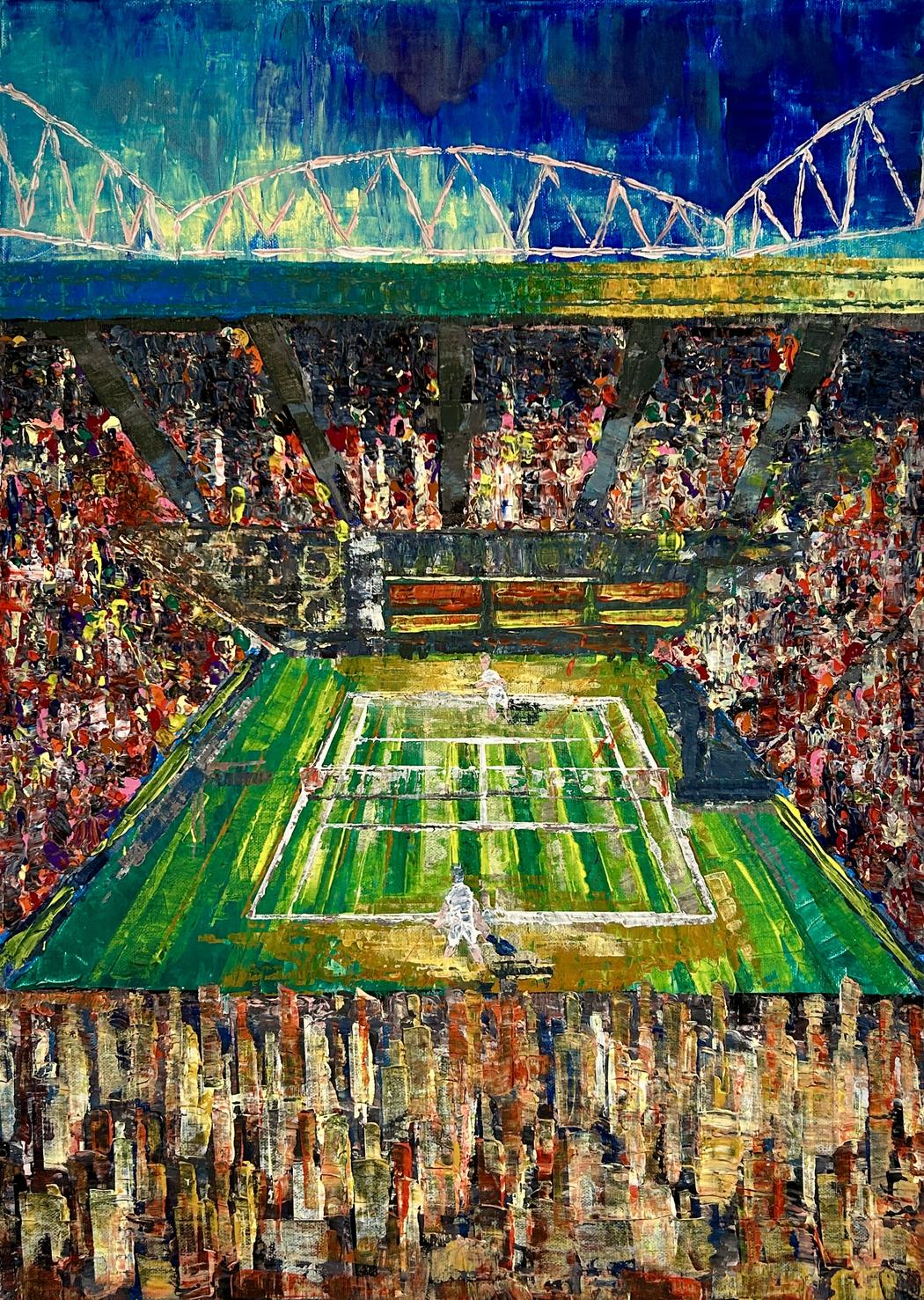 Jan-Luca Thomas | Wimbledon Vibe | 2025
Jan-Luca Thomas | Wimbledon Vibe | 2025
Could you describe your typical creative process — from the first sketch to the final textured layers?
In short: chaotic and impulsive – quite unlike my actual character.
I keep a growing list of ideas on my smartphone – from motifs and techniques to organizational notes. I find inspiration everywhere: in a TV series, in a conversation, or in the midst of everyday life. Some ideas can be implemented immediately, while others take weeks or months to mature.
At some point, the moment comes when a thought is “ripe” for the canvas. Some pictures are created in a single session, others wander back into the corner until the spark ignites again. And if that doesn’t happen, there’s always the option of painting over them and starting again.
The process takes different amounts of time depending on the size and level of detail. I usually work my way from rough structures to increasingly finer details until, in the end, all the elements fit together seamlessly.
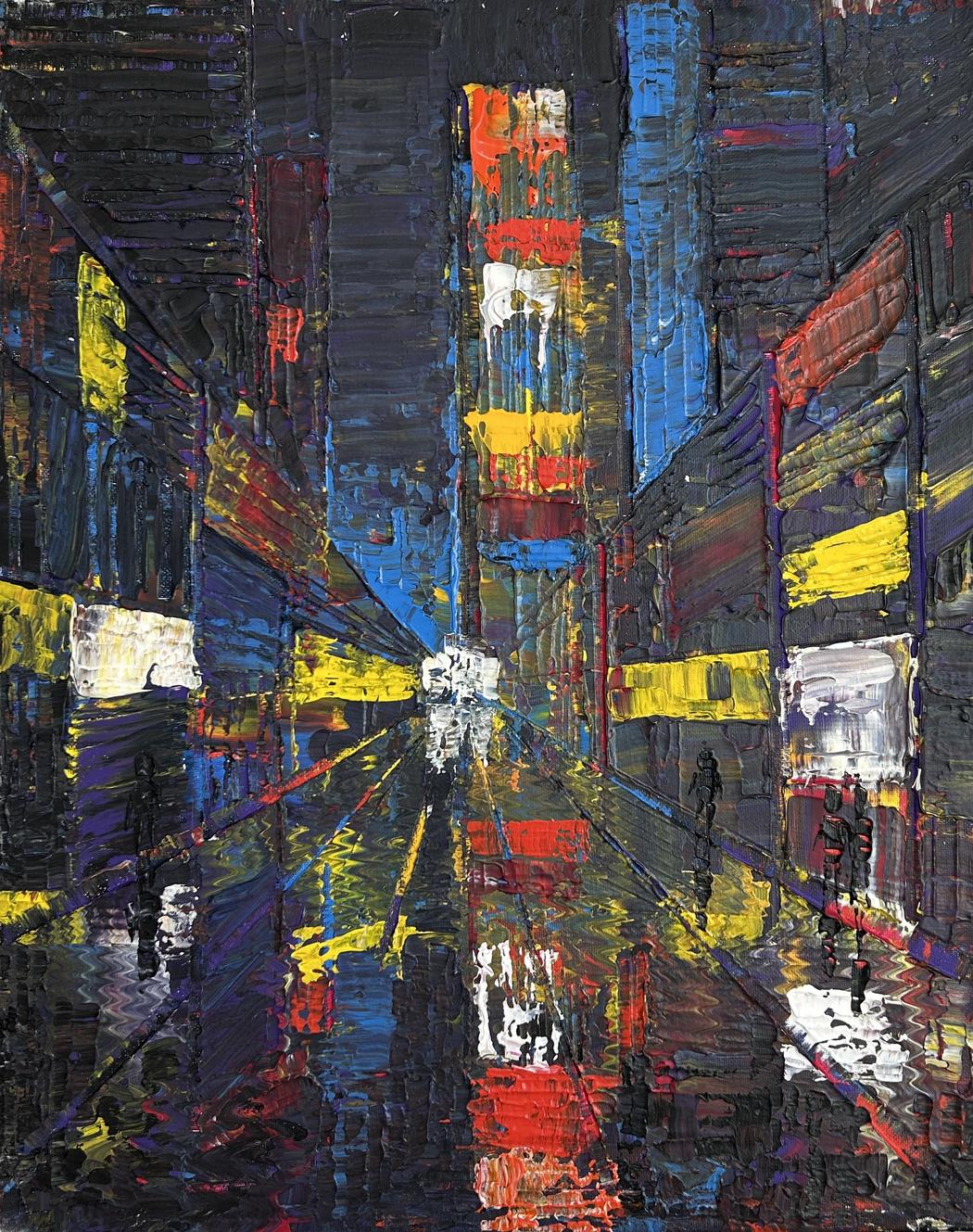 Jan-Luca Thomas | Psychedelic Times (Square) | 2025
Jan-Luca Thomas | Psychedelic Times (Square) | 2025
You mention a balance between structured planning and intuitive decision-making. How do you know when to let intuition take over?
At the beginning of every work, there is a brief moment when I pause. The sketch is on the canvas, the first areas are in place – and then I realize: the planning is complete, now I have to let go.
From this point on, I begin to add details and accents intuitively. Interestingly, the best results come when I focus less on perfection and trust my instincts more.
My process is like a pendulum: it begins in a structured way, transitions into free, intuitive work, and ends again with targeted, planned steps in the finishing touches.
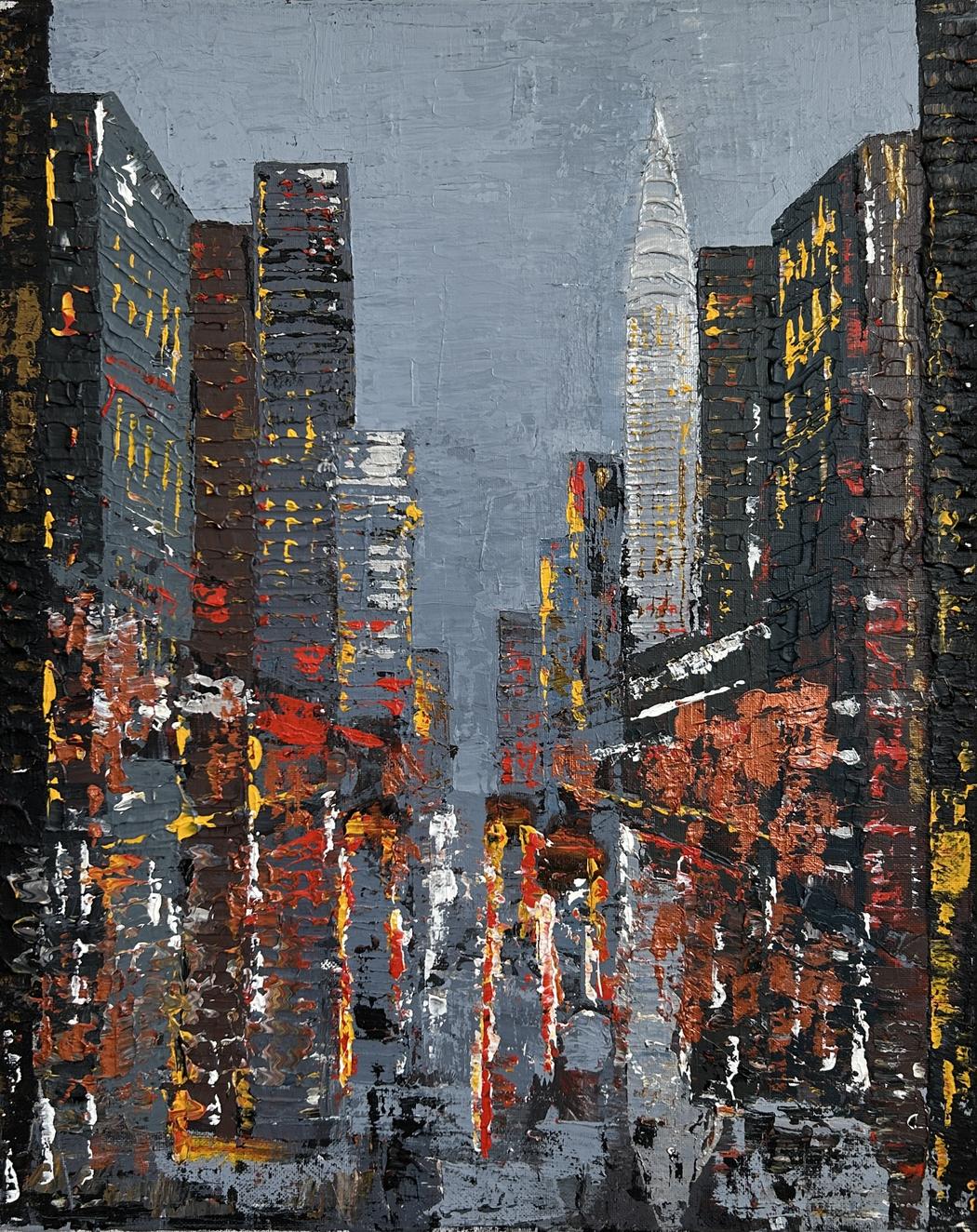 Jan-Luca Thomas | The Chrysler | 2025
Jan-Luca Thomas | The Chrysler | 2025
Texture and light are key elements in your work. What techniques do you use to create depth and movement with the palette knife?
The basis for this is a thick application of paint – the so-called impasto technique. The impasto layers create a relief-like surface that refracts light and casts minimal shadows. This makes even highly impressionistic works appear immediately vivid.
For motifs involving water or rain, I use reflections created by applying different layers of paint. This develops a dynamic of its own.
I also work with compositional elements such as vanishing lines or deliberately placed accents that guide the viewer’s gaze. Spontaneous splashes or abstract elements can also energize a work and create depth.
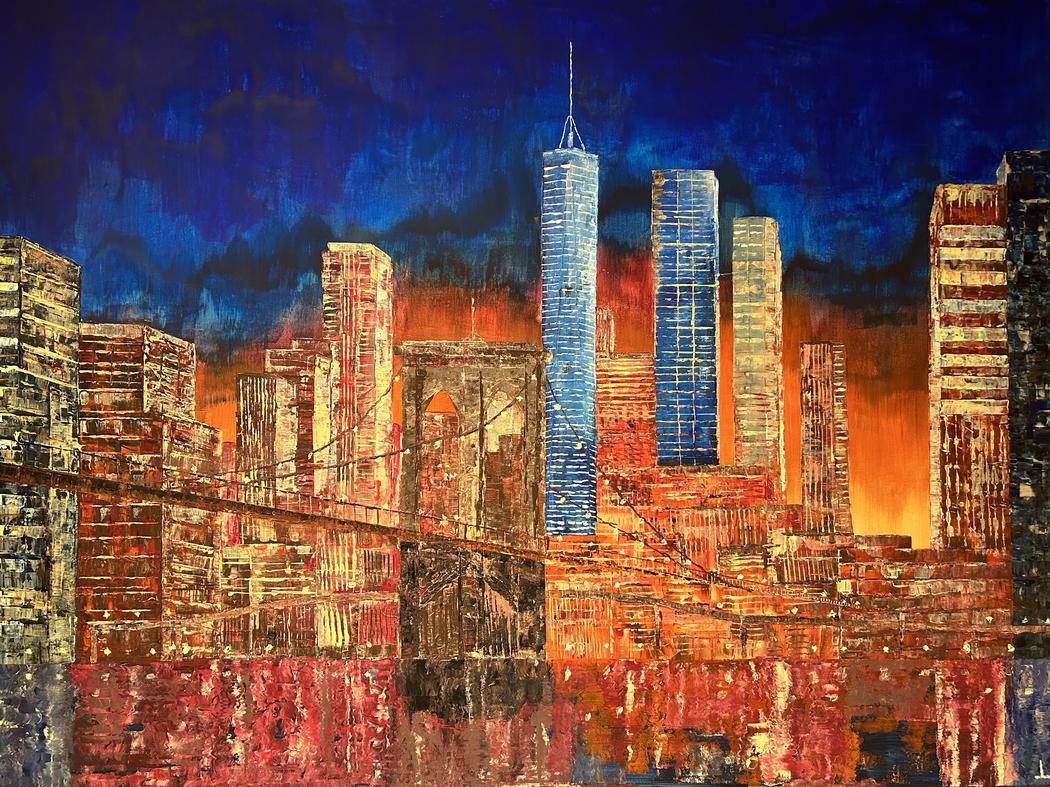 Jan-Luca Thomas | Sunrise At Brooklyn Bridge | 2024
Jan-Luca Thomas | Sunrise At Brooklyn Bridge | 2024
Your subjects range from quiet city streets to dynamic urban skylines. What draws you to urban landscapes as a source of inspiration?
Cities hold a special magic for me. The mixture of monumental architecture and the small, fleeting moments of the people within them never ceases to inspire me.
I have spent a lot of time in Berlin and Cologne. Even though I personally prefer a more rural life, my thoughts keep drawing me back to the big cities. The chaos, the colors, the coexistence of hustle and bustle and tranquility – all of this can be wonderfully translated into painting and creates a moment of mental digression for me.

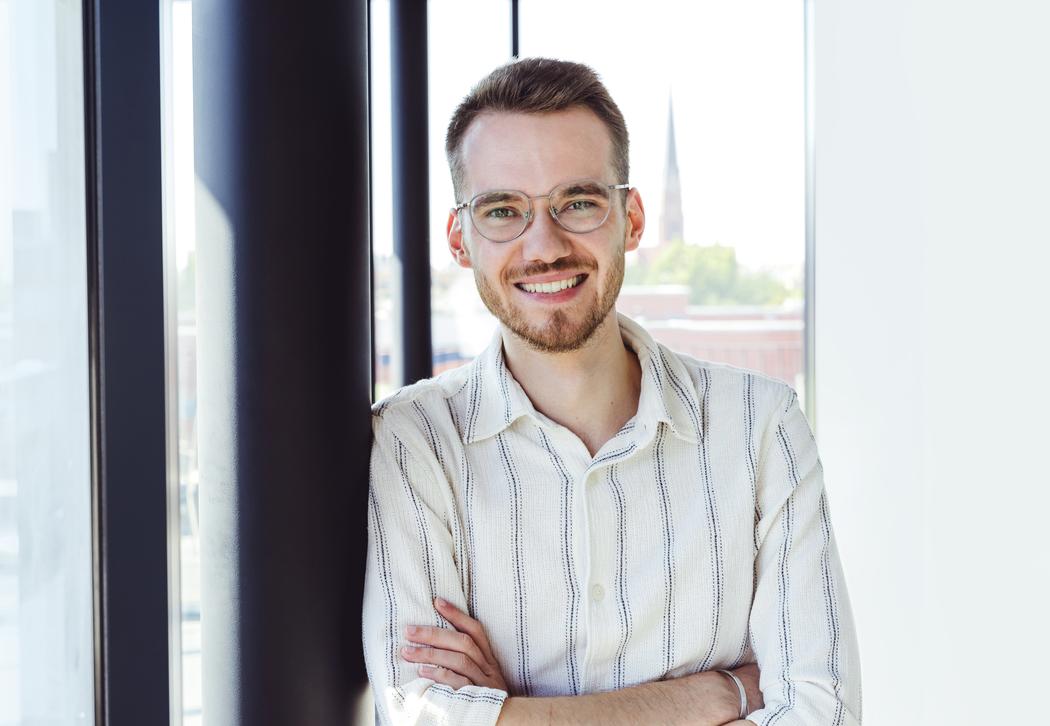
Leave a Reply